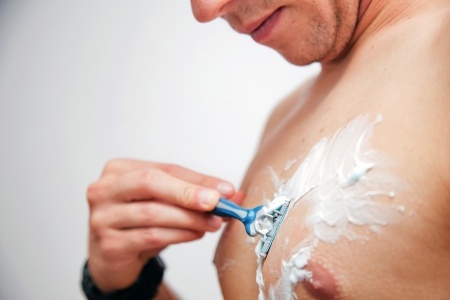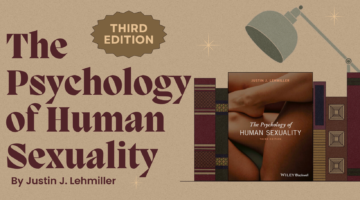Women’s Feelings About Male Body Hair Appear To Change During Ovulation
December 2, 2013 by Justin Lehmiller

There is a growing body of evidence that what heterosexual women find attractive in men varies across the menstrual cycle. Specifically, when women are at their most fertile (i.e., when they are ovulating), they tend to be attracted to “manlier” men. That is, ovulating women show an exaggerated preference for guys with masculine-looking faces and bodies, deeper voices, and so forth. The prevailing theory is that women are evolutionarily wired to look for partners who have the best genes for making babies. Because masculine physical features are supposedly a sign of a healthy immune system, it is thought that women have developed a preference for manly men when they are at peak fertility with the hope that these superior genes will be passed along to their children. Based upon this reasoning, one might presume that women’s preferences for male body hair would also fluctuate across the menstrual cycle because body hair is typically considered a sign of masculinity. A recent study suggests that women’s body hair preferences do indeed vary according to fertility status, but not in the way that you might expect.
In this study, a group of 299 heterosexual Finnish women aged 15-69 were surveyed about their preferences for male body hair [1]. Specifically, they were shown 20 pairs of male torsos and asked to select which one they preferred. Each image pair showed a photo of the same man, but in one image he had chest hair and in the other his chest hair had been shaved off. Where did these photos come from? The researchers recruited men from local universities and gave each of them a bottle of vodka to pose for some shirtless pictures before and after shaving their chests (“I shaved my chest for science…and vodka!”).
The women were divided into four groups: those who were premenopausal and ovulating, those who were premenopausal and not ovulating, those who were pregnant, and those who were postmenopausal. Ovulation status was estimated based upon the date of the woman’s last period and the length of her typical cycle.
So what did they find? First, premenopausal women (regardless of whether they were ovulating, non-ovulating, or pregnant) generally showed a preference for hairless guys, whereas postmenopausal women preferred hairy guys. So, among all of the women who were still of childbearing age, their overall preference was for hairless men (of course, not all of them preferred hairless guys–but a clear majority did). Second, this preference for hairlessness was exaggerated among women at peak fertility. In other words, hairy men were least preferred by ovulating women compared to all other groups.
On a side note, the researchers also found that women’s preferences for male body hair were correlated with how hairy her current romantic partner was as well as how hairy her father was. Specifically, women who had hairier boyfriends and dads tended to be attracted to the hairier models. This suggests that there may be some degree of social learning at play in preferences for body hair.
These findings tell us that although women prefer manlier men when they are ovulating, this preference does not seem to extend to hairy guys. Why is that? The authors of this research argue that male hairiness may not be a sign of biological masculinity after all. In fact, they even cite some counterintuitive research suggesting that male body hair is not even associated with men’s testosterone levels. In light of this, it would make sense that women did not evolve a preference for body hair in the same way that they did for masculine faces and deep voices. Another possibility is that women prefer hairless guys because a lack of body hair makes muscles and other masculine features more noticeable.
Any way you look at it, it seems that women’s feelings about male body hair are not constant across time. Although social and cultural factors help to shape body hair preferences and there is a lot of individual variability, women’s hormone levels certainly seem to play a role too.
Want to learn more about The Psychology of Human Sexuality? Click here for a complete list of articles or like the Facebook page to get articles delivered to your newsfeed.
[1] Rantala, M. J., Pölkki, M., & Rantala, L. M. (2010). Preference for human male body hair changes across the menstrual cycle and menopause. Behavioral Ecology, 21, 419-423
Image Source: 123RF.com
You Might Also Like:

Dr. Justin Lehmiller
Founder & Owner of Sex and PsychologyDr. Justin Lehmiller is a social psychologist and Research Fellow at The Kinsey Institute. He runs the Sex and Psychology blog and podcast and is author of the popular book Tell Me What You Want. Dr. Lehmiller is an award-winning educator, and a prolific researcher who has published more than 50 academic works.
Read full bio >

